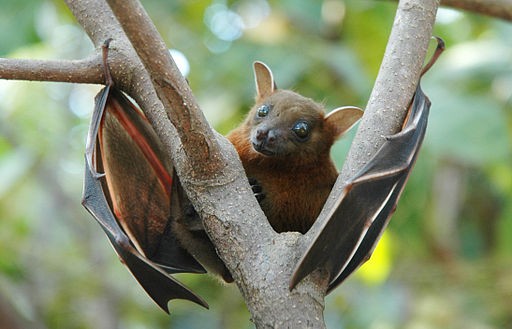By Dane Lorica, | December 27, 2016

A new study has revealed that a virus infecting the fungal pathogen of bats can track the transmission of the lethal disease. (Anton 17/CC BY-SA 4.0)
Scientists have discovered a new virus that infects the pathogenic fungus of White Nose syndrome affecting bats. This virus can help in tracking the spread of the disease, according to the research.
It was discovered that the virus varies in regions thus providing a hint of the disease's epidemiology.
Like Us on Facebook
The fungal disease currently threatens a large population of bats in the United States. It has caused roughly six million mortalities in the North America area from the time it was recognized in 2006.
Pseudogymnoascus destructans is a fungal organism that was first reported in New York and has now spread to four provinces in Canada and 29 states in the US.
The little brown bats are most vulnerable with 99 percent mortality rate. The high number of White-Nose related deaths does not only affect the bat species but also the ecosystem in general. Without bats, the population of insects infesting humans and crops cannot be controlled.
Since the fungus thrives in cold areas, bats under hibernation are easily infected. Sick animals have white lesions on their snouts as the pathogenic agent moves to different body tissues such as their wings, chest, and face.
The study includes an examination of 62 fungal isolates, 35 of those came from the US, 17 from.Europe, and 10 from Canada. Researchers found out that the pathogenic virus was only isolated in specimens from North America.
Rossinck explained that with the fungus' clonal characteristic, tracking it is difficult. However, she said that "the virus it harbors has quite a bit of variation," which means that samples analyzed from a particular state have a different virus isolate.
One possible reason for this is that viruses affecting fungi do not easily jump from one to another fungus making the viral genome vary. With this, the scientists "believe the differences in viruses reflect the movement of the fungus, and this viral variability should enable us to get a better handle on how the disease is spreading."
Despite this effective way of tracking the White-Nose syndrome, the scientists are worried that virulence will be hard to study because "there are almost no bats left to study."
The study on the use of virus to track the transmission of White Nose disease in bats was published in the PLOS Pathogen online page.
-
Use of Coronavirus Pandemic Drones Raises Privacy Concerns: Drones Spread Fear, Local Officials Say

-
Coronavirus Hampers The Delivery Of Lockheed Martin F-35 Stealth Fighters For 2020

-
Instagram Speeds Up Plans to Add Account Memorialization Feature Due to COVID-19 Deaths

-
NASA: Perseverance Plans to Bring 'Mars Rock' to Earth in 2031

-
600 Dead And 3,000 In The Hospital as Iranians Believed Drinking High-Concentrations of Alcohol Can Cure The Coronavirus

-
600 Dead And 3,000 In The Hospital as Iranians Believed Drinking High-Concentrations of Alcohol Can Cure The Coronavirus

-
COVID-19: Doctors, Nurses Use Virtual Reality to Learn New Skills in Treating Coronavirus Patients







